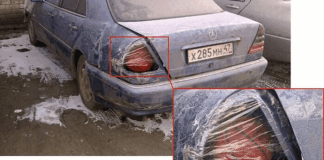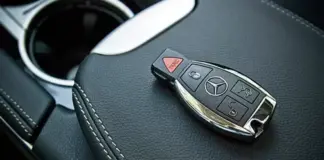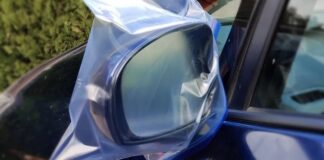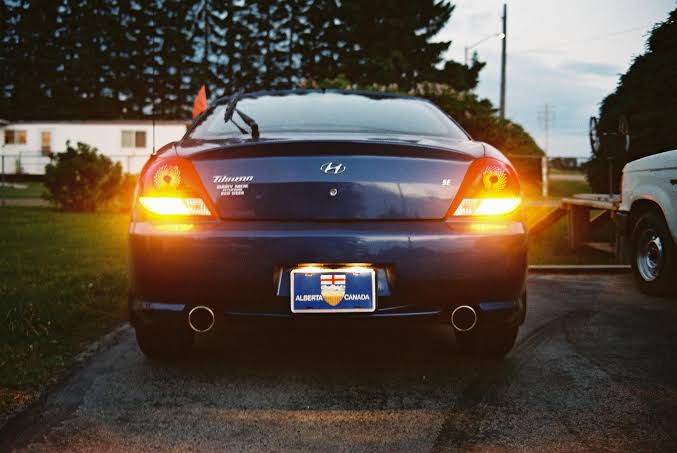Hazard lights serve as a critical alert for other drivers, signaling dangers like accidents, severe weather, emergency vehicles, or vehicle malfunctions. However, it can be frustrating when your car’s hazard lights remain active even after the engine is turned off.
Why do hazard lights stay on after engine shutdown?
Door Problems
If one or more doors aren’t securely closed, the hazard lights may stay on. The car’s sensor, designed to detect open doors, triggers this response. To check, ensure all doors are firmly shut. If the lights turn off, the door latches may be faulty and require repair.
Advanced Security System
Certain vehicles have sophisticated anti-theft systems that demand specific steps to deactivate. Consult your owner’s manual to understand how to disable the warning lights. For example, a BMW’s key might include an alarm system that needs to be synced with the car to stop the lights.
In some cases, you may need to insert the key into the driver’s door and hold it for a set duration to deactivate the hazard lights. Additionally, a third-party anti-theft device could be the culprit if its wiring was improperly installed, causing the lights to stay on after the car is off. Return to the technician to have them inspect and fix the wiring.
Bring your vehicle to the technician for a thorough review and correction of the issue.
Faulty Hazard Switch
A malfunctioning hazard switch is a frequent reason for lights staying on after the car is off. The switch may stick in the “on” position, keeping the lights active. This problem, along with faulty electrical relays, can affect any car, though some models are more prone.
Fix this by repairing or replacing the defective parts. Test the hazard button to see if the lights toggle on and off consistently. If they don’t, try jiggling the button to unstick it. If that fails, apply WD-40 to lubricate the switch and remove dirt or moisture buildup.
If the problem persists, consider visiting a professional mechanic for further inspection.
Sensor Malfunction
Modern vehicles often have sensors that alert you to theft attempts or forced entry. These sensors are typically linked to the hazard lights, activating both lights and horn when a door is opened without disabling the sensor. A faulty sensor may send false signals, keeping the lights on even after you press the off switch.
You can replace the sensor or temporarily disconnect the hazard lights from it until repairs are made.
Corrosion in Electrical Components
Corrosion in electrical sockets can cause hazard lights to malfunction. Over time, rust may accumulate on components, especially in humid or rainy environments. Addressing this requires a detailed inspection. Check the hazard light connections under the hood for signs of corrosion.
Examine the fuse box and hazard switch for rust as well, as corrosion in these areas will need cleaning. Specialized cleaning products can efficiently remove rust and restore the functionality of electrical components.
Electrical Short Circuit
A shorted turn signal can prevent hazard lights from turning off due to an internal fault in the circuit board or relay system. The relay’s resistor controls the rhythmic blinking of the lights, but a fault can cause irregular flashing. A defective hazard switch or shorted signal can disrupt the relay.
This issue may lead to lights flashing all night, draining the battery. An electrical short can cause rapid, erratic blinking. Disconnect the switch to check if the relay is the source—do the lights stop? A voltmeter can also detect voltage drops while the car idles.
Voltage drops may result from grounding issues in the relay system, causing unprompted blinking. A qualified electrician or mechanic can resolve this.
Glovebox Malfunction
A faulty connection in the glovebox can cause hazard lights to stay on after the engine is off. In many modern cars, the glovebox has a relay system that lights up when opened and turns off when closed. Often, the glovebox and hazard lights share the same wiring system.
If the glovebox is left open or not properly secured, the hazard lights may remain active. A malfunction in the relay system can affect both the glovebox light and connected hazard lights. A professional mechanic can diagnose and repair the wiring issue.
Grounding Issue
A grounding problem can cause hazard lights to stay on, especially after washing the car or driving in wet conditions. Grounding completes the circuit, allowing power to flow even when the switch is off. Some models, like the Mercedes-Benz Kompressor, are prone to this in rainy weather.
Spraying WD-40 on the hazard switch and relays can quickly resolve this. The spray lubricates, prevents rust, penetrates, and displaces moisture, eliminating grounding issues.
Final Thoughts
Persistent hazard lights after turning off your car are more than an annoyance—they can drain your battery, forcing you to disconnect it each time you park.
This issue may signal deeper electrical problems. Ignoring it can lead to serious consequences, such as rapid battery drain or even battery failure. Act quickly and have a certified technician diagnose and fix the problem to avoid costly repairs.







